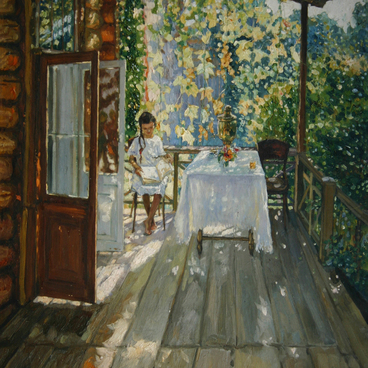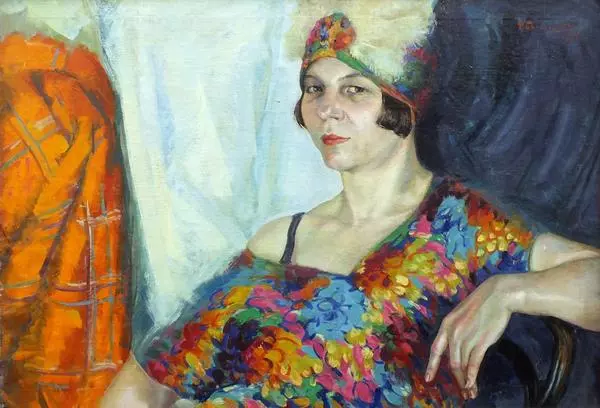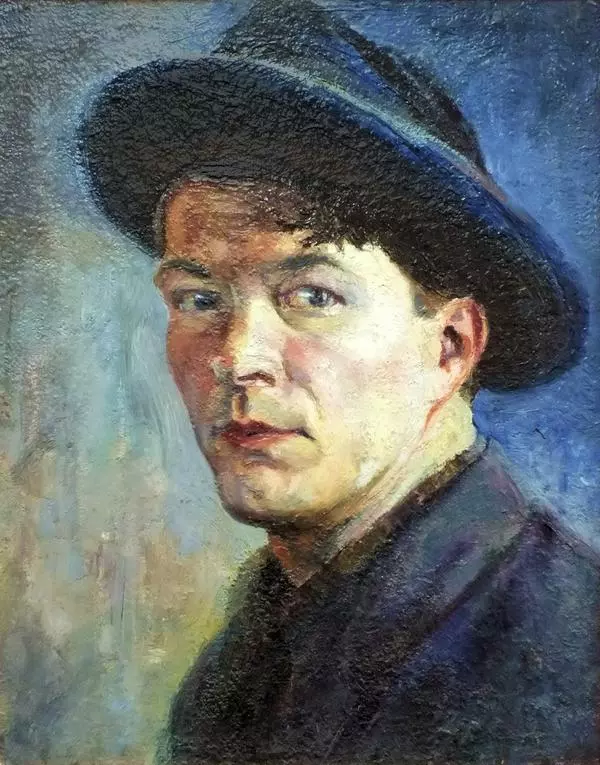The painter Fedor Semenovich Bogorodskiy was born in the family of a lawyer in Nizhny Novgorod in 1895.
At the age of 19, he left for Moscow and entered the Faculty of Law at Moscow University. During those years he took to Futurism, a new trend in avant-garde art.
In 1916, he participated for the first time in the art exhibition of the Nizhny Novgorod Society of Amateurs of Arts, where his work “Portrait of Mother” was displayed. Later that year, he was mobilized and sent to Petrograd to serve in the Navy. After a while, he was transferred to aviation. In the fall of 1917, his plane was shot down by German artillery. Fedor Bogorodskiy survived and spent a long time in hospital.
In 1918, he was demobilized and went to Moscow, where he worked in the All-Russian Military Commission. He was soon sent to Nizhny Novgorod, where he took the position of Chairman of the Department for Cases of Special Importance of the Revolutionary Tribunal of Nizhny Novgorod Governorate.
During the Civil War, Fedor Bogorodskiy was sent to the front as political commissar of the warship flotilla. In one of the battles, he was shell-shocked. Having undergone medical treatment, he was demobilized and sent to Nizhny Novgorod, where he was appointed head of the investigative section of the revolutionary military tribunal of the Volga region.
From 1922 to 1927, he studied at the Higher Art and Technical Workshops, or VKHUTEMAS, under the artist Abram Yefimovich Arkhipov. During this period, he created a series of portraits of street children.
According to the artist, it was the future architect Lazar Ivanovich Chinyonov who sat for the painting “Street Boy” from the permanent exhibition of the Alexander Grigoriev Art and History Museum. The portrait was donated to the museum by Yevgenia Grigorieva, the wife of the public figure and artist Alexander Grigoriev in 1980.
In 1924, Fedor Bogorodskiy joined the Association of Artists of Revolutionary Russia.
He traveled extensively in the Volga region, Mari and Chuvash Republics. At the age of 32 Fedor Bogorodskiy graduated and went to live abroad, in Italy and Germany.
From 1938, he was engaged in teaching and became head of the Department of Painting and Drawing at the Institute of Cinematography. When the Great Patriotic War broke out, he was evacuated from Moscow, and in the fall of 1944, he was sent to the 5th Air Army.
At the age of 52, Fedor Bogorodskiy became a Corresponding Member of the USSR Academy of Arts. From 1955, he was Chairman of the Board of the Moscow Union of Artists.
Fedor Bogorodskiy died in 1959 and was buried in
Moscow at the Novodevichy Cemetery.




